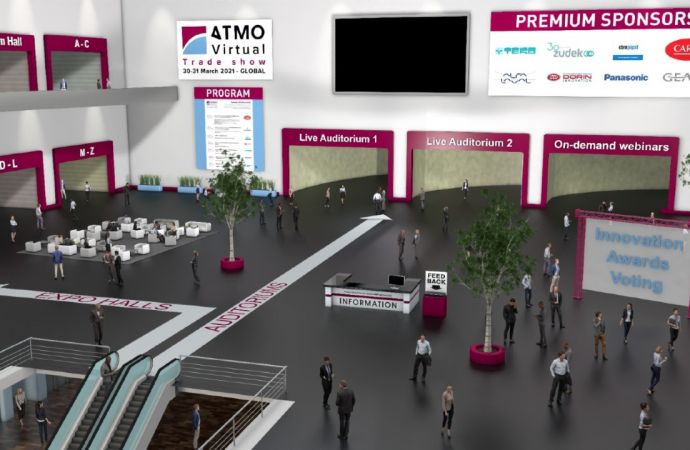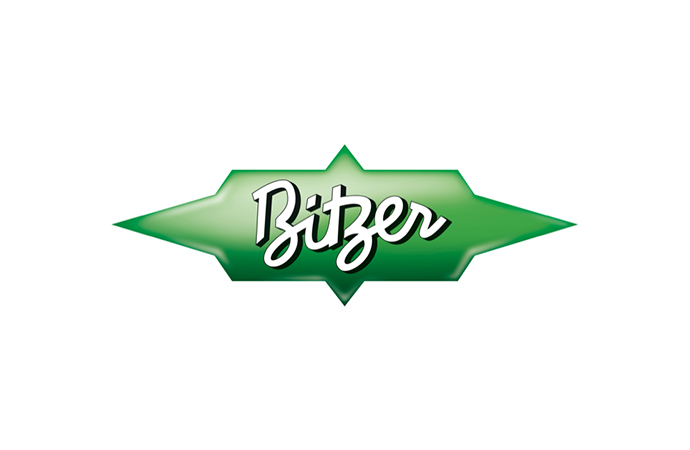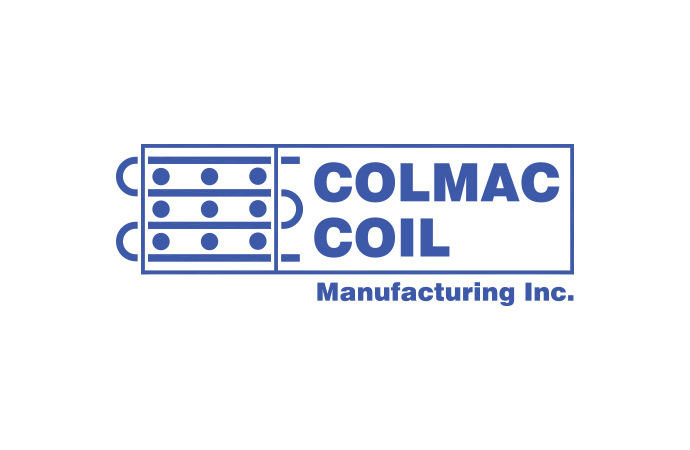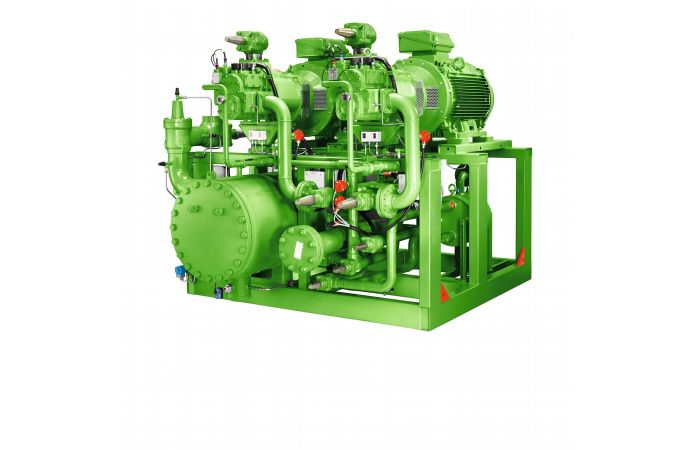Ammonia technology was well represented at the 67th AHR Expo in Chicago last week, with some companies displaying low-charge components and others featuring more conventional models. The former companies emphasised the increased safety of the lower-charge units, though booths with larger technology benefited from the “wow” factor that brought traffic in to take a closer look. +VIDEO +PHOTOS

Components for lower-charge systems
At its AHR Expo booth, compressor manufacturer Bitzer displayed an open-drive screw compressor, model OSKA7472, designed for low-charge –100 pounds or less – ammonia air-conditioning systems. It has a variable speed range of 1,450 to 4,000 rpm.
“There’s a trend in the industry toward minimising the charge of ammonia in systems for air-conditioning applications,” which improves safety, said David Sylves, Bitzer’s director of inside sales and marketing. “Bitzer makes small capacity [compressors] relative to traditional ammonia compressors, so we’re in the sweet spot for companies making 100-pounds-or-less systems.”
Three to four OEMs are in the “validation phase” of design and testing of ammonia air-conditioning systems incorporating the compressor, said Sylves, adding that a food manufacturer has installed one such system to cool offices in its warehouse.
At its AHR Expo booth, Colmac Coil promoted a two-year-old ammonia (NH3) evaporator that is being used in public warehouses in the U.S. and Australia, including retrofit systems. The evaporator supports a DX (direct expansion) refrigeration system that can operate under 10°F –- temperatures that would otherwise require a recirculated ammonia system, said Kent Perkins, engineering manager for Colmac. (Colmac Coil video below)
Moreover, he added, the DX system holds a “minimal charge” (six pounds per ton of refrigeration vs. 25 pounds for a pumped bottom feed system),
The lower charge results in greater safety and the avoidance of U.S. government restrictions on the allowable quantity of ammonia (10,000 pounds). “If you’re approaching the limit, you could go to this,” said Perkins. The cost of the evaporator is comparable to that of existing evaporators, he noted, adding that DX systems are more energy efficient than recirculated systems because all of the ammonia liquid in DX is converted to gas.
Oil separator suited for oil-heavy compressors
Westermeyer Industries displayed a large oil separator (with a 30-inch diameter) designed for screw-machine compressors in industrial ammonia refrigeration systems. The separator also comes in 20-, 24- and 36-inch diameter versions. “Screw- machine compressors put out a lot of oil,” said Adam Chapman, area sales manager, Mueller Industries Climate Group. (Mueller acquired Westermeyer in 2012.) “It takes a large amount of oil capacity and oil separation technology to be able to support that.” Westermeyer is adding 37,000 square feet to its manufacturing plant in Bluffs, Illinois, this year to be able to handle larger vessels.
The large size of the oil separator on display provided a “wow” factor of Westermeyer’s booth, Chapman said. “The amount of manufacturing detail that goes into that type of vessel shows that we can weld anything for any refrigeration industry.” He added that 90% of Westermeyer’s units are custom made for their OEM customers.
Frascold sees opportunity in U.S. and Canada
Frascold, the Italian compressor maker that opened a U.S. subsidiary in December, showed an open type screw compressor for ammonia, hydrocarbons and synthetic refrigerants; it is part of the ATS series, which includes 16 models. These compressors are suitable for a range of applications, including marine/industrial refrigeration, process cooling, heat pumps and air conditioning. They feature low noise level and low vibrations, supporting a longer operative life.
Frascold sees “a huge opportunity” in the U.S. and Canada, said Kristian Ellefsen, CEO of Frascold USA, the new subsidiary, based in Seattle. “Over the next three to five years, we’re investing heavily in a good sales and technical force and multiple stocking locations.” Frascold also makes semi-hermetic reciprocating compressors for CO2 subcritical and transcritical applications.
Güntner U.S. had on display at the AHR Expo a mammoth ammonia evaporative condenser designed for food distribution and processing warehouses. The high-efficiency unit is made of stainless steel rather than the galvanised steel in conventional condensers. “This makes it more resilient and corrosion-resistant,” said Glenn Comisac, Güntner’s vice president, industrial cooling business.
The Güntner condenser also features reduced weight and greater water savings compared to other condensers on the market, he said. Its EC fan technology allows the unit to operate at higher efficiency, particularly at lower speeds.
MORE INFORMATION
Related stories






